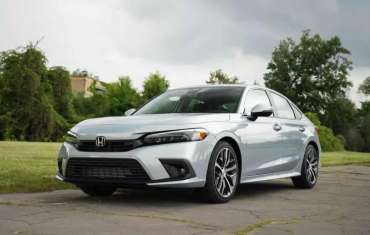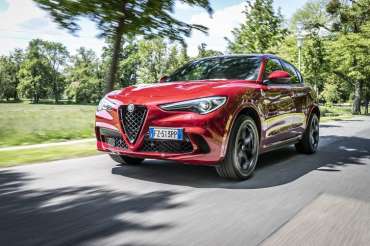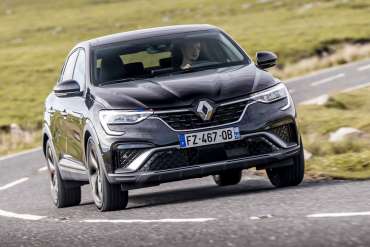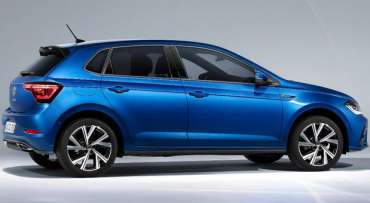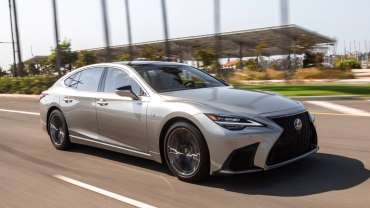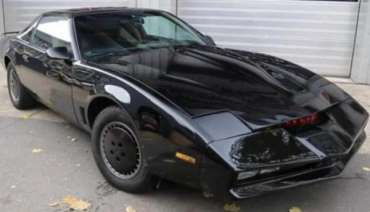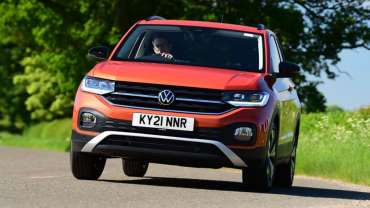
Worldcarblog.com
2022 Honda Civic First Drive Review: Honda’s Boy Racer Grows Up
Despite the popularity of new SUVs, the fact is that not everybody wants to sit up high in a quasi-off-road station wagon. And for those remaining resisters, Honda has this: the updated 2022 Honda Civic. As you can see, the new Civic has shed its old “boy racer” look and has adopted the calmer, more conservative appearance of the bigger Accord sedan. Gone are the odd bumper polygons and the low and racy roofline, and in its place we have … well, what appears to be a three-quarter-scale Accord. But how much of the rest of the old racy Civic has become the new, more conservative Accord? I recently got to spend a couple of days with the new 2022 Honda Civic Touring, and I can confirm: The new one has grown up in many ways.
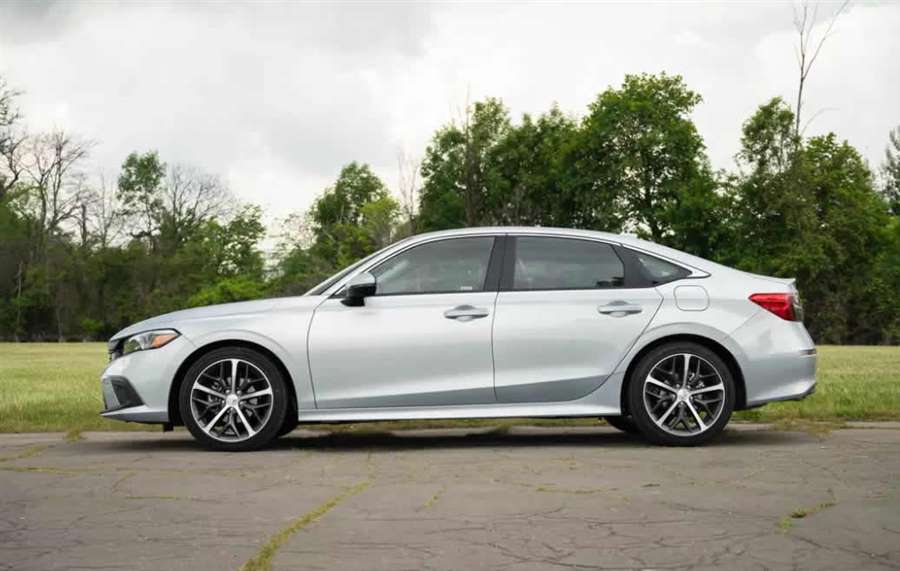
Controversial Looks
From the outside, the new car is easily mistaken for the Accord. There are many styling similarities, from the new proportions of the longer, lower body to the more upright roofline and larger windows; even that little kink in the C-pillar is copied over from the Accord sedan. It’s a decidedly more conservative look than the Civic has had for the previous two generations, and it comes just as competitors are getting ever more outrageous (have a look at the new Hyundai Elantra) in order to stand out and grab whatever share of the shrinking compact sedan class they can get. It’s not a bad look for the Civic, by any means, but its tepidness does make me wonder how this is going to look in a Type R version with scoops, wings and ducts added.
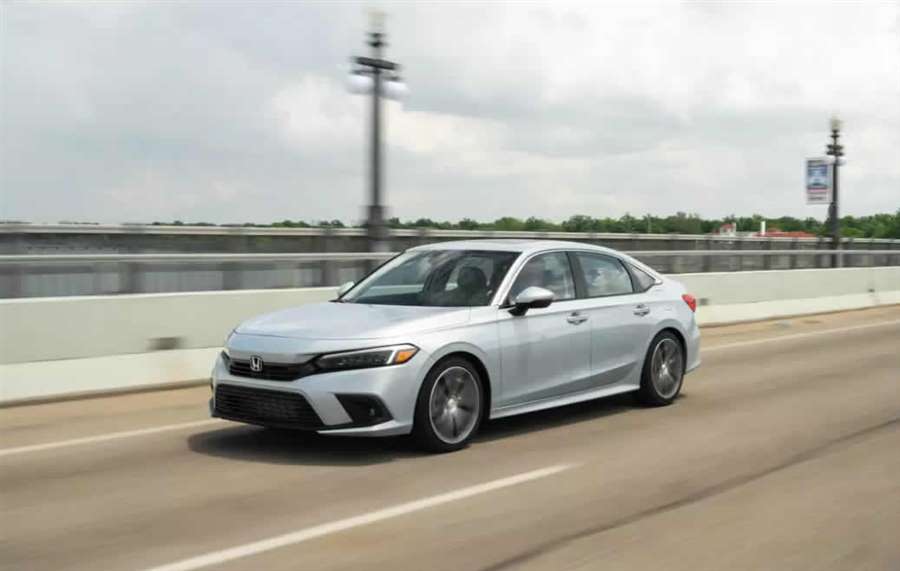
It’s Strong at Heart
Under the hood is a turbocharged 1.5-liter four-cylinder engine mated to a continuously variable transmission, which is, yes, the Accord powertrain. But in the Civic EX and Touring trims, this powertrain combination is good for 180 horsepower and 177 pounds-feet of torque, understandably less than it makes in the bigger Accord. It’s one of two possible engines in the new Civic, the other being a naturally aspirated 2.0-liter four-cylinder you get in the basic LX and Sport trims making 158 horsepower and 138 pounds-feet of torque. (Both are tied to the retuned CVT). There’s no sporty Si model or fire-breathing Type R track monster just yet, but Honda likes to get the basic stuff out of the way first before turning up the heat later on.
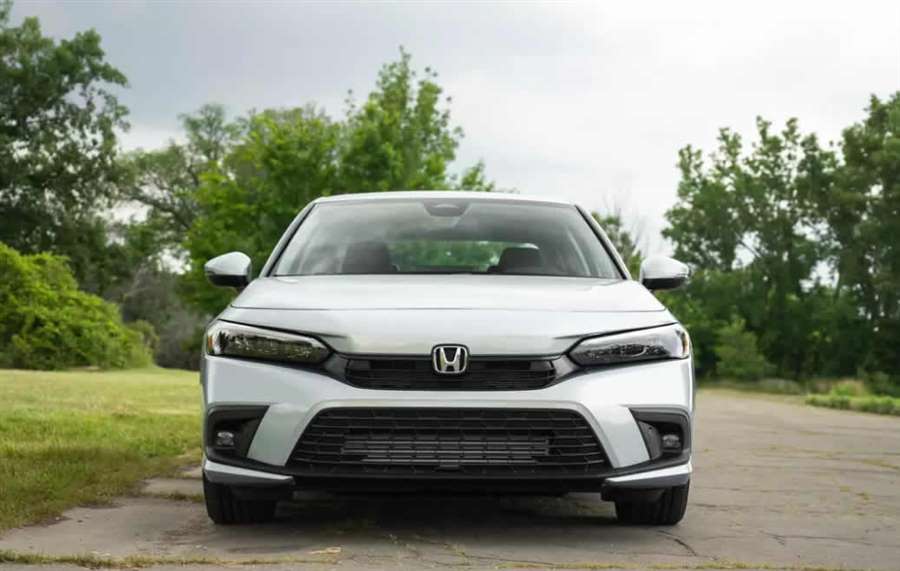
A Rethink of Honda Interiors
While Honda stylists may have made a near carbon copy of the Accord from the outside, the inside is a whole new world for the brand. The interior is much, much different than the Accord, featuring a retro-cool style that brings back some of the boxier looks of classic Japanese cars of the 1980s. There’s a long strip of hexagonal mesh dash trim that hides the front passenger climate control vents, and the interior itself no longer looks like it was designed by several committees that never talked to each other. What do I mean by that? Well, the doors now meld well with the dash design, and the graining of the materials is the same from the dash to the doors, as well. There’s a sophistication to the new Civic interior that looks quite refreshing, and it comes from a newfound minimalism that we first saw in the Honda e electric car that’s not sold in the U.S.
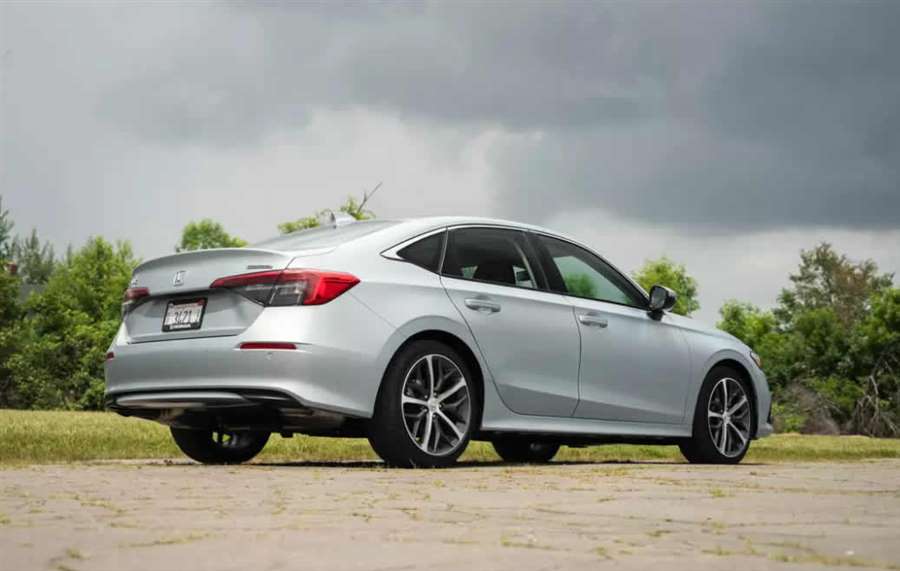
The new electronics look good, with a high-mounted 9-inch multimedia screen (the biggest ever fitted to a Honda-brand vehicle) easily reachable by the driver, with a dedicated volume knob and a big prominent “home” button. Wireless Apple CarPlay and Android Auto are standard with the 9-inch system in the Touring but require a cable if you stick with the standard 7-inch multimedia system. The new 10.2-inch digital gauge cluster that comes only in the Touring trim is also well done, with four possible arrangements: either traditional round dials or bar-type graphics, each also featuring a minimalist option that reduces the information overload to the driver.
Overall, there are only as many buttons as are needed, nothing extra, nothing confusing. Everything is arranged within the driver’s sightlines. I can even see the buttons that Honda likes to mount low and to the left of the driver’s knee without a problem now. You feel like you’re sitting low in the Civic thanks to the plentiful headroom, but the windshield feels upright and the dash and beltline feel low, improving the outward visibility considerably over the past Civic. The steering wheel feels substantial, and the shifter position (note that it’s not a push-button affair) is perfectly located for resting your hand.
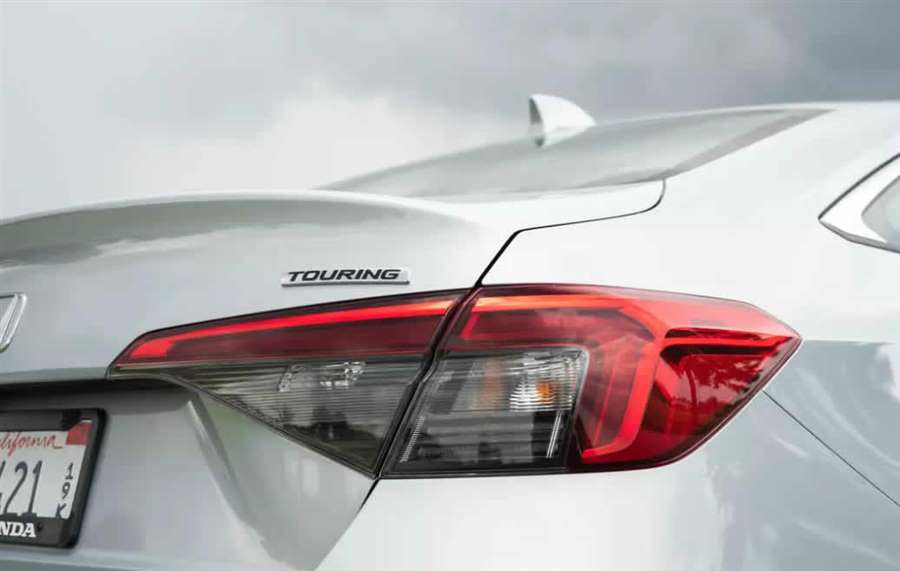
Materials quality was excellent in the top Touring trim level I drove, with leather seats and nicer trim up top. It’s also plenty spacious inside, with about average room for the category both front and back. The tall design to the overall exterior sheet metal comes in handy in the trunk, which feels quite capacious, with sufficient room in it to wonder if the upcoming hatchback model is really necessary. There’s a maturity to this design; it’s more friendly and approachable than futuristic and fantastical, but it again makes me wonder how Honda is going to zoot this up for its sporty models down the road. Guess we’ll have to wait and see.
More Entertaining Than Expected
Or will we? The Touring trim may not be the vaunted Si, but it still is far more entertaining to drive than any non-sport Civic trim level I’ve ever tried. The turbocharged engine is super-torquey; even a light jab of the pedal brings surprising acceleration. The transmission may be one of the best-tuned CVT units I’ve ever tried, it’s perfectly matched with the engine to provide quick power and impressive response. Something new for 2022 is a Sport mode on 2.0-liter Sport and turbocharged Touring trims, which changes steering and throttle response when you select it, allowing you to hustle the Civic along back roads with surprising speed — and you’ll find yourself grinning as you do it.
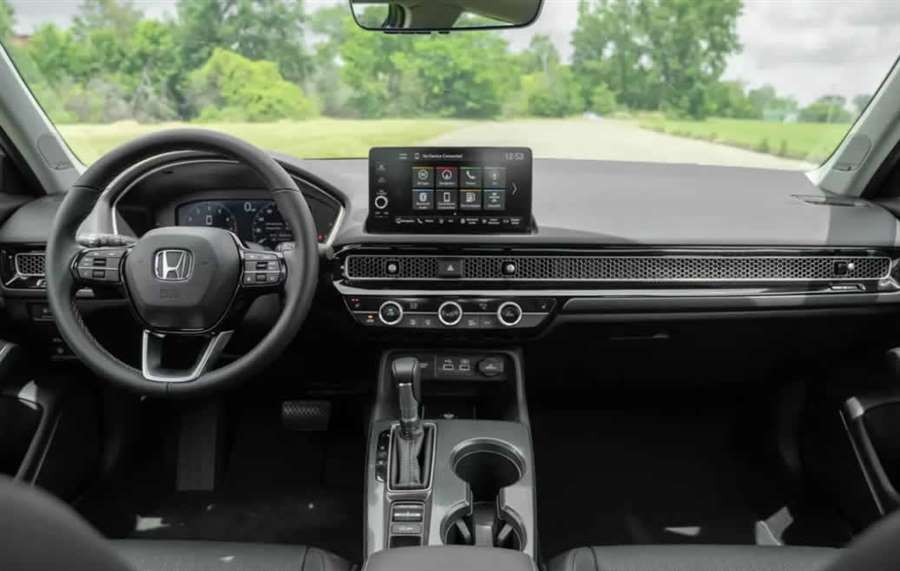
The whole experience of driving the new Civic is one of sophistication, and as good as an Accord is, this just might be better. The chassis response is excellent, the ride and handling balance is outstanding, and there’s actual steering feel and feedback, too. It feels considerably lighter on its feet than a new Accord, which always struck me as a bit piggish and heavy. Even the brakes are outstanding, providing excellent bite and progressive stopping strength without being the slightest bit grabby.
It may not be billed as a sporty sedan, but the Civic holds its own nicely and conveys the sensation of an advanced, refined, even premium driving experience. You can feel that the bones of the car are going to provide an amazing base for the actual sporty versions in the Si and Type R whenever they do arrive. I’d easily stack it up against the best out there like the latest Elantra, the Volkswagen Jetta or even more premium models like the Audi A3. If, like me, you really don’t see any need for a new crossover when there are still sedans out there that are this good, you’re going to want to put this new Civic on your list.
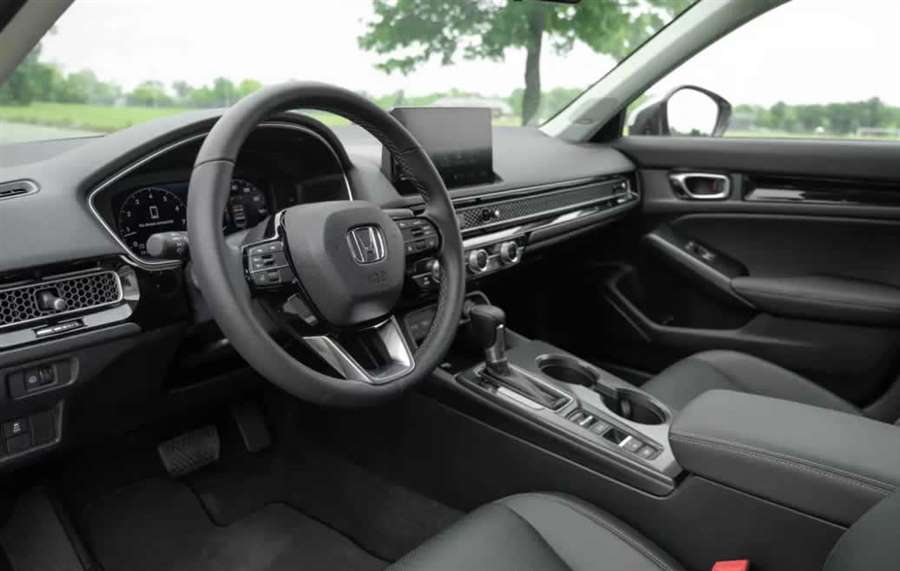
Long Live the Resistance
Honda has also brought some updates to the Civic’s onboard safety tech, now featuring available rear-seat side airbags, some next-generation front airbags meant to minimize head and neck trauma, and a new camera for forward facing systems like adaptive cruise control and pedestrian detection. There’s also a new optional 12-speaker Bose premium audio system that sounds fantastic. And loaded examples like my fully equipped Touring test car will come in just a hair less than $30,000, including destination.
But really, the story with the new Civic is the enhanced driving dynamics and simplified interior styling that elevate the car beyond its humble compact sedan class. It’s a substantial, satisfying car to drive, either on back roads or urban boulevards — and for SUV resisters, it’ll give you one more reason to avoid that new crossover for a few more years.
(cars.com)
Revealed: How Volkswagen tried to buy an Alfa Romeo
According to the latest statements of the CEO of the Stellantis group, Carlos Tavares, it can be concluded that the competition has repeatedly wanted to take ownership of the Alfa Romeo brand, and the most serious was Volkswagen in 2018.
According to Autocar sources, contact was established between Volkswagen and the FCA Group during 2018 on the idea of Ferdinand Piëch. The former director of Volkswagen often spoke positively about Alfa, for example during the Paris Motor Show in 2011 when he thought that this brand could flourish if it were owned by the VW Group, and even then said that Porsche could manage the Italian brand .
By 2018, Piëch no longer had the main say in Volkswagen’s day-to-day operations, but sources claim he was still determined to buy an Alfa Romeo. His interest jumped when investment company ADW Capital Management, a longtime owner of shares in the FCA, suggested that the Alfa Romeo brand could reach the level of Ferrari with a few changes.
Contact was established in June 2018, at the request of Ferdinand Piëch. Mike Manley, who then took over as CEO of the FCA Group, and Herber Diess, the head of Volkswagen, met to talk about potential collaboration. However, when Diess asked if Alfa Romeo was for sale he got a short and simple answer - no.
Renault Arkana review
A well-priced and good-to-drive Coupe/SUV crossover
Is the Renault Arkana any good?
This is the latest addition to the Renault range. It's a new SUV/coupe crossover – currently the biggest it offers in the UK – and it's a direct rival for the Parkers car of the year-winning Toyota C-HR as well as the innovative Citroen C4 and Mazda CX-30. We've driven a European-spec left-hand drive version for early impressions.
The Arkana is usefully on point right now – it's exclusively a hybrid, and comes in front-wheel drive form only. It's the first coupe-styled SUV from Renault, it arrives in the UK in late August, and is priced from £25,300, making it an affordable alternative to its bigger-selling rivals.
Most importantly, the Renault Arkana aims to offer a mix of style, practicality and refinement in a value-for-money package. The early signs are that it's a good-value and stylish car with appeal.
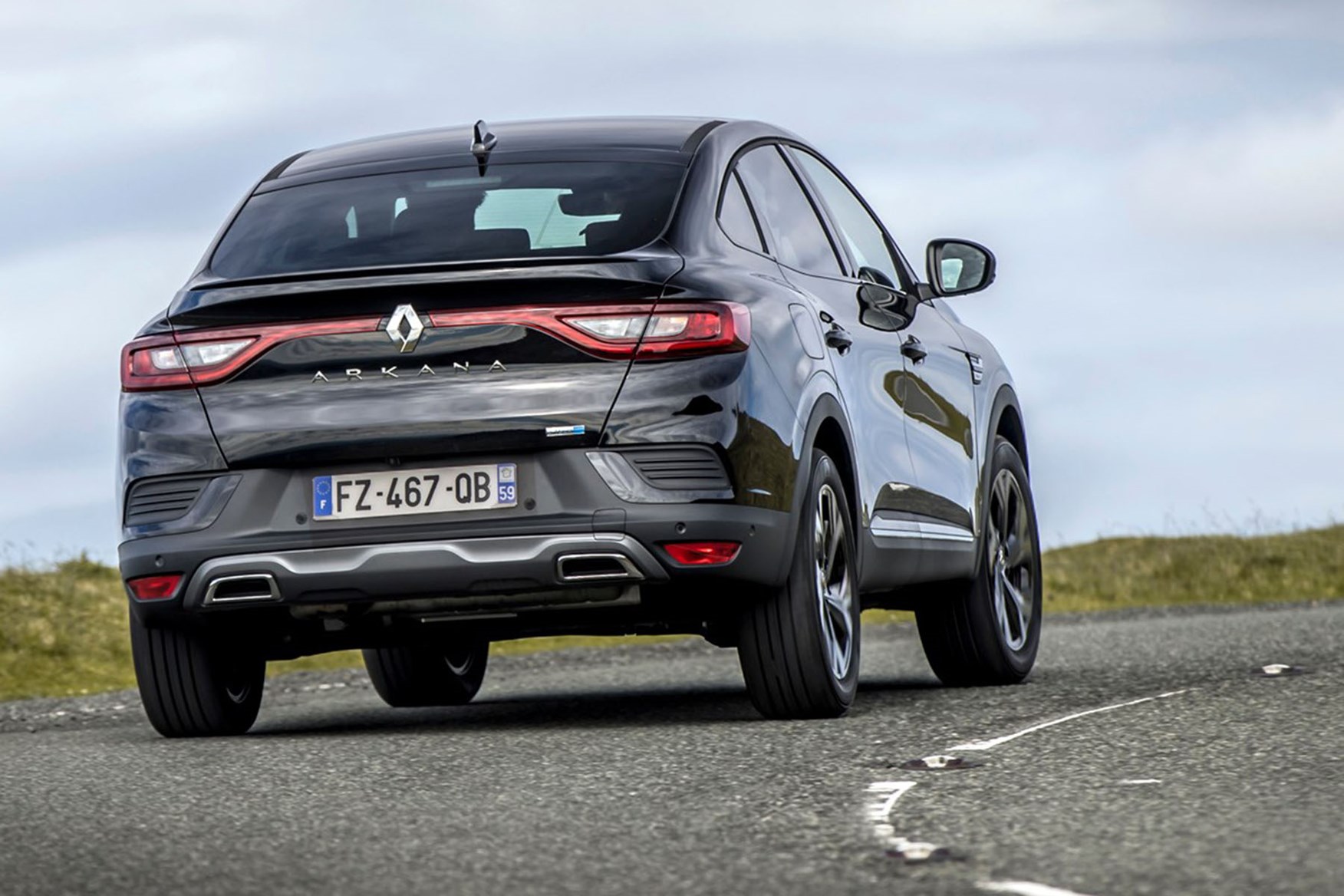
What's it like inside?
The cabin quality is intended to be premium. Certainly, Renault has massively upped its game in this area recently – the interiors of the current Clio and Captur are very modern, stylish and clever. Our test Arkana was a pre-production model, in not-quite UK spec, so it wouldn't be fair to pass comment on the details, but there's nothing radical or innovative going on with the cabin architecture.
There are a lot of physical switches, which dates the cabin, but for many people will actually be a boon, meaning you won't be over-using the touchscreen.
This is a stylish car, but also very much aimed at families, so it needs to look more coupe-like from the outside than it feels from the inside. And it does. The curve of the roof hasn't resulted in tiny windows for the rear passengers, and unlike the Toyota C-HR it's bright and airy in the back.
Rear passengers get slightly more width than those in the front. There are three seats in the back, although a full-grown adults wouldn't enjoy spending an extended time there. It's better to treat the Arkana as a four-seater, and use the wide, comfortable central armrest in the back. Rear legroom is adequate, and headroom will only be an issue for over-six-footers.
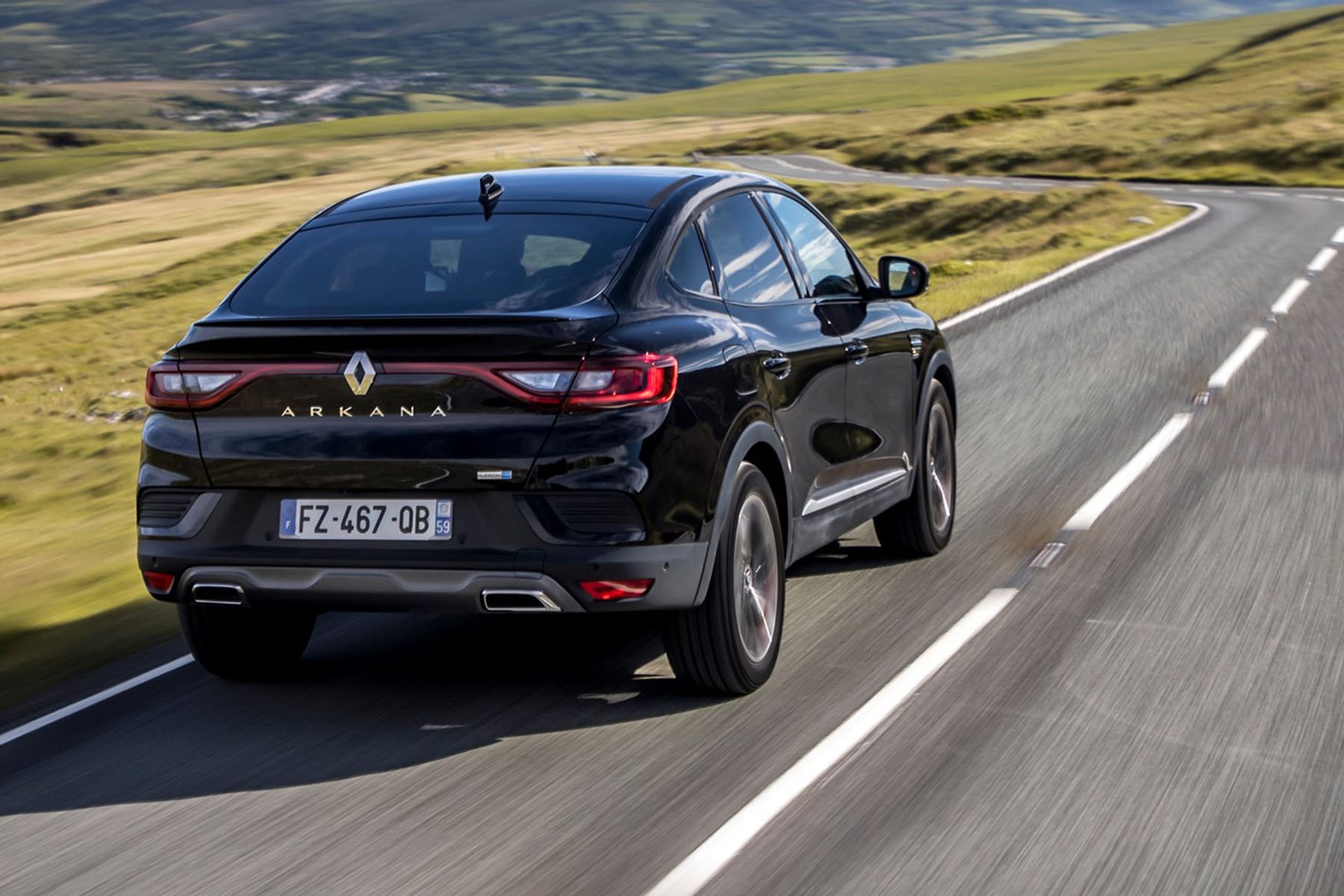
The rear seat splits 60:40, and folds flat to increase boot size from a decent 480 litres for the E-Tech hybrid (513 for the TCe mild hybrid) to a handy 1,263 (1,296), although the angle of the hatch will rule out boxier loads.
What's it like to drive?
The Arkana's performance won't set the world on fire, but it's very smooth and refined, which is what you're looking for from a hybrid. Acceleration is leisurely, with a 0-62mph time of 10.8 seconds, while the 108mph maximum speed is more than enough for a family car in this class.
A battery sits under the rear seats and powers an electric motor that's attached to the 1.6-litre petrol engine up front, supplemented by a starter-generator, much as you get in a mild hybrid. Between them they muster a total of 140hp, and it starts up in EV mode.
It sits on the same platform as the Clio and Captur, which are both excellent cars to drive. Increasing its size has not harmed the handling or ride quality one jot. It corners willingly and soaks up most bumps unobtrusively, helped by comfortable seats.
On all but entry-level models you get drive modes play with, but since Pure seems a little sluggish and Sport a bit sudden, you're best off sticking with Hybrid, which provides a responsive set-up and deploys whichever permutation of electric, petrol and mixed power sources is best for any given situation.

Don't be fooled by the RS Line trim, which is purely cosmetic. The on-paper figures are modest and correspond closely with the undramatic sensation of driving the Arkana.
The E-Tech's automatic transmission system doesn't have a manual shift option. Instead, it just gets on with delivering power to the front wheels without drawing attention to itself or requiring any driver input.
The other version, the TCe 140 mild hybrid, has only a small extra battery under the front seats, which can store surplus energy directed to it by the 12-volt starter-generator attached to the 1.3-litre petrol engine. It can't drive on electric power only – it's there to help the petrol engine and give smooth stop-start operation. It's the lighter and quicker of the two cars: 140hp, 9.8sec to 62mph and a top speed of 127mph.
What models and trims are available?
There are three spec levels, all available with either powertrain: Iconic, S Edition and RS Line. All look and feel like good value-for-money cars. The performance isn't going to get anyone excited, but if your priorities are style, practicality and a good smattering of convenience and comfort features, then you're looking in the right place.
Apple CarPlay and Android Auto connectivity is standard. All models get Active Emergency Braking System, Traffic Sign Recognition, Lane Departure Warning, Lane Keep Assist and cruise control. Lighting is all-LED. Options include an opening sunroof, leather upholstery, black roof and adaptive cruise control.
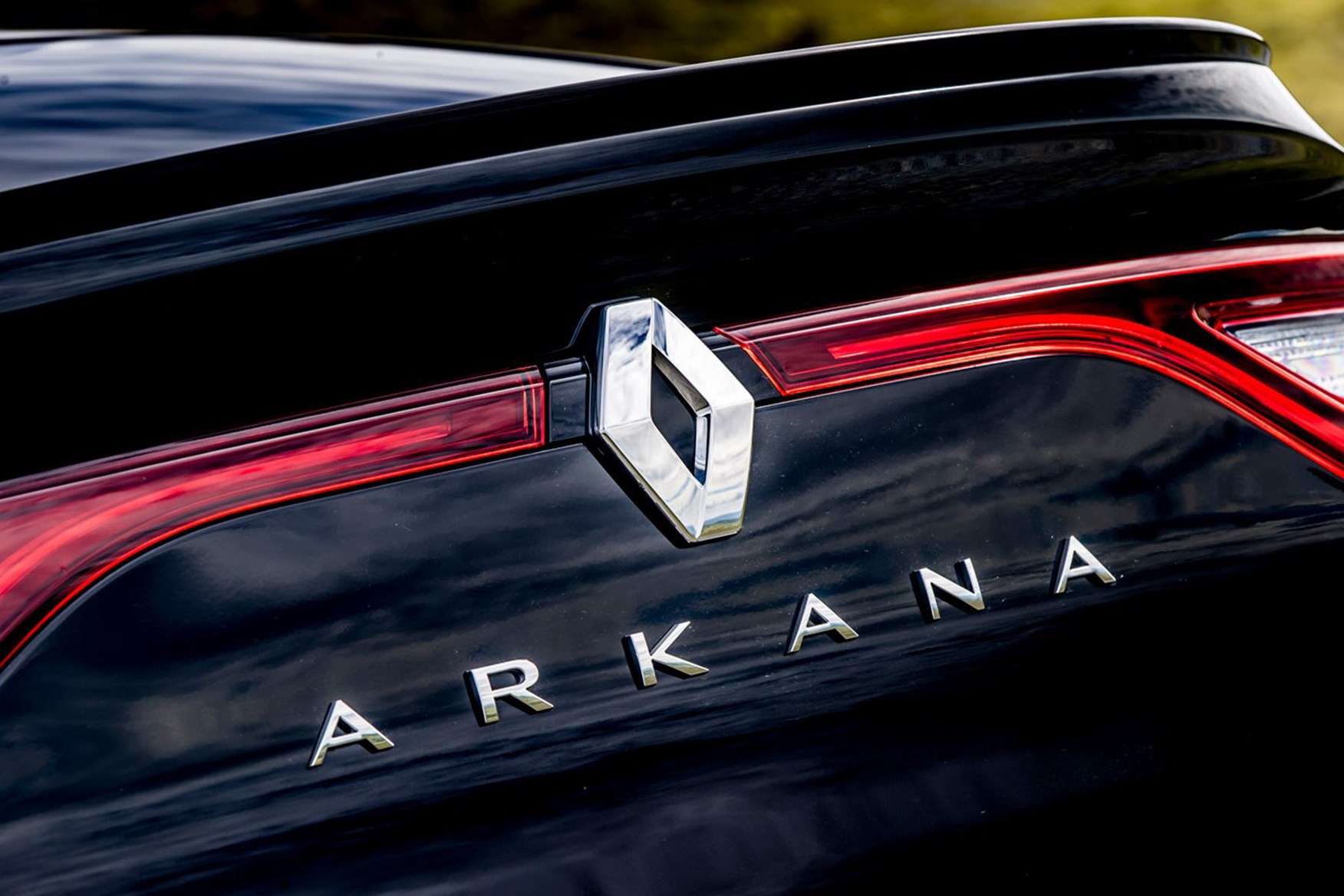
The middle-ranking S Edition has better infotainment than the entry-level Iconic, with the touchscreen up from 7.0 to 9.3 inches, bigger wheels – up from 17 to 18 inches – and various design changes. RS Line trim has different 18-inch wheels and more significant exterior changes, including a different front bumper and grille.
What else should I know?
The sleek shape isn't just about the looks. Renault says that the Arkana is about 25% more aerodynamic than a traditional SUV, which helps with economy and refinement.
Renault expects the E-Tech hybrid to be the big seller in the range. This system – as already seen on the Clio, Captur and Megane – uses energy-recovery know-how from the company's F1 team. The aim is seamless transition between electric, hybrid and petrol.
Renault Arkana verdict
Should you buy one?
The Renault Arkana might seem rather ordinary, even old-fashioned these days, considering the form is committed to launching 14 E-Tech hybrid and electric models by 2025. But looking at it in a more positive light, the Arkana is a proper car, adopting the SUV/coupe style that's a proven success for other car makers.
The Arkana uses tried-and-trusted technology that makes it capable and good to drive. More radical cars, with a higher degree of electrification, are available from Renault and elsewhere, if that's what you want, but for those who want a contemporary-looking car, and don't want to go electric, this is an appealing choice.
Right now, this is a smart, practical, enjoyable and decent-value new car that's going to be offered at an appealing cash price.
(parkers.co.uk)
Volkswagen Polo in Singapore costs $ 73,600 - why?
Singapore is the most expensive country to own a car
YouTuber Kuma Kuruma opens the topic using the Volkswagen Polo as an example, citing its open market value (OMV), or the price of the car before taxes and fees are applied.
According to B92, the value of the open market is 17,796 Singapore dollars. Then an excise tax of 20 percent of the value is added, in Paul's case 3,559 Singapore dollars. After that, there is the service tax (GST) which is 7 percent - 1494 Singapore dollars.
The worst fee is the registration fee (ARF), and for cars whose open market value is below 20,000 Singapore dollars, you pay an additional 100 percent of the open market value. This means that since Polov OMV is Singapore $ 17,796, its registration fee is that much more.
Add another 3,559 Singapore dollars in excise duty and 1,494 dollars in services tax, the total price of the new Paul in Singapore is 40,646 Singapore dollars, which is 30,226 US dollars, or 2,983,214.82 dinars.
However, once you've bought your new car, your troubles don't stop - you need one more thing before you can drive it: a Certificate of Rights (COE) that allows you to drive a newly acquired vehicle for up to 10 years. For one Polo, such a certificate would cost around 48,000 Singapore dollars, according to which the final cost of Polo would be 99,000 Singapore dollars, which is 73,620 dollars!
2022 Lexus LS500h Teammate Driver-Assist-System Review: There's No "Tesla" in Teammate
Lexus uses an altogether more comprehensive approach than Tesla does to achieving SAE Level 2 autonomy.
Tesla was first into the breach in the U.S. with a driver assist system capable of SAE Level 2 autonomy, which is the second-from-the-bottom tier of self-driving capability as defined by the Society of Automotive Engineers. (Full or close to full self-driving gets Level 4 and 5 designations.) Autopilot handles acceleration, braking, steering, and even lane changes on its own, but only on contained roads such as freeways, and the driver must monitor things. That Tesla allowed its Autopilot-equipped vehicles even that much autonomous leeway with the meager sensor package onboard raised eyebrows—all the more so when you consider what Lexus is bringing to the table with its SAE Level 2 setup dubbed Teammate.
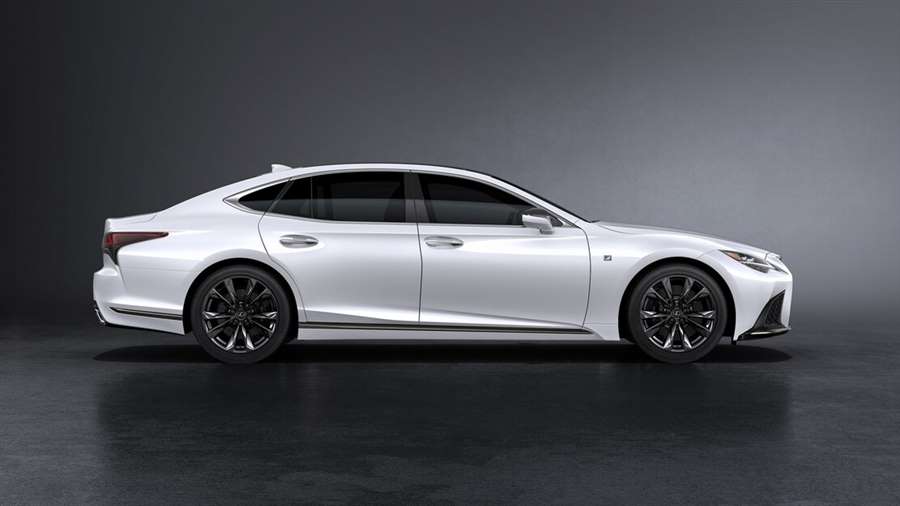
It's The Sensor Package, Stupid
Is Lexus late? Sure. Mercedes-Benz has offered similar capability to Autopilot for a few years now, including automated lane changes. But like Mercedes (which also trailed Autopilot), Lexus is coming in much better prepared.
Consider what Tesla works with: Its Autopilot-equipped vehicles (at least, before its recent abandonment of a forward radar sensor in the Model 3 and Model Y) include front, rear, and side-facing cameras, plus 12 near-range ultrasonic sensors (i.e., parking sensors). The larger Model S sedan and Model X SUV still include a forward-facing radar sensor, but Tesla has been pretty clear about the fact its onboard computers favor inputs from the cameras when scanning the road ahead.
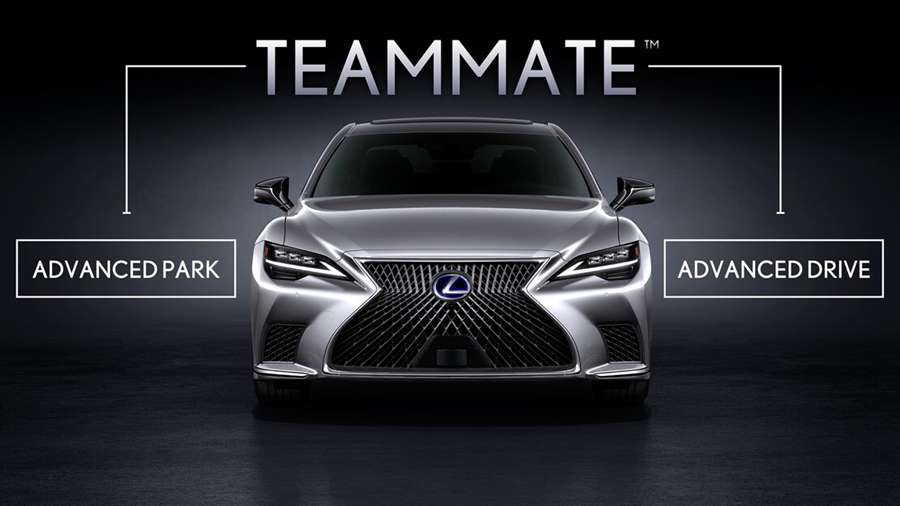
Now consider what Lexus' first go with Teammate brings to the table: Front-facing Lidar, front-facing long-range radar, short-range radar facing the front and blind-spot areas (three directions in total), 360-degree parking cameras and ultrasonic sensors, a forward camera, and a front-facing telescope. Both Teammate and Tesla's Autopilot deliver a 360-degree view of the vehicle's surroundings, but one is like having Terminator vision, and the other is the relative equivalent of waving a stick around yourself while blindfolded.
Although Tesla claims its cameras can deliver "powerful visual processing at up to 250 meters of range," that performance is limited to certain conditions. Camera performance deteriorates in bad weather, whereas radar—so long as the sensor isn't physically blocked by, say, ice or packed snow—can detect fast-moving objects in rain or sleet. Every sensor has its limits, of course, but there's something reassuring about the multiple redundancy built into Lexus' setup, wherein overlap exists in the viewpoints of the Lidar, radar sensors, and cameras.
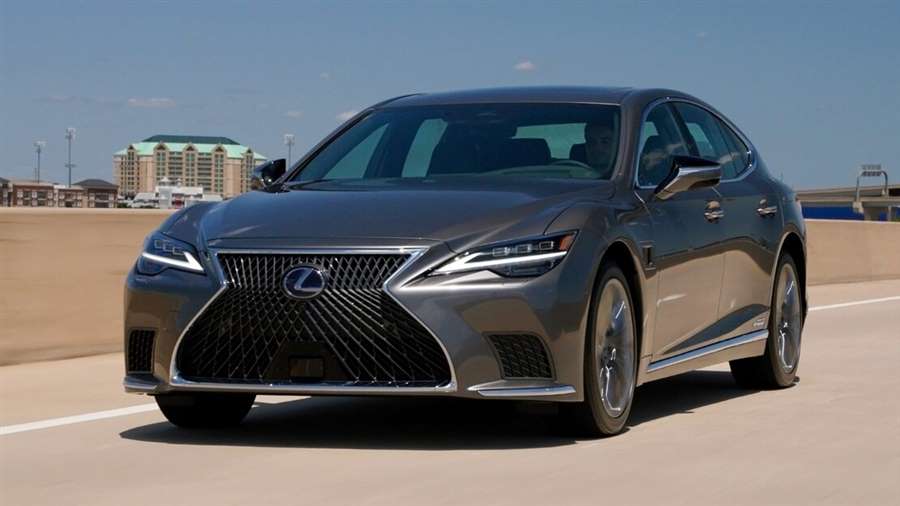
No matter how comprehensive the sensor package, eventually the driver will need to retake control for some reason or another. These are, after all, SAE Level 2 systems that demand the driver's attention at all times. Teammate is, predictably, more upfront about policing the driver's attention during use. An infrared camera above the steering wheel monitors the driver's head movements and eyes to make sure they're paying attention at all times, even while the system is working.
Like Tesla, Lexus relies on sensors in the steering wheel that detect the driver's grasp; with Teammate, you can go extended periods hands-free, but as soon as the system deems the driver is needed again, those hands better get to the wheel, quick, or else the car will begin to slow down and pull over.
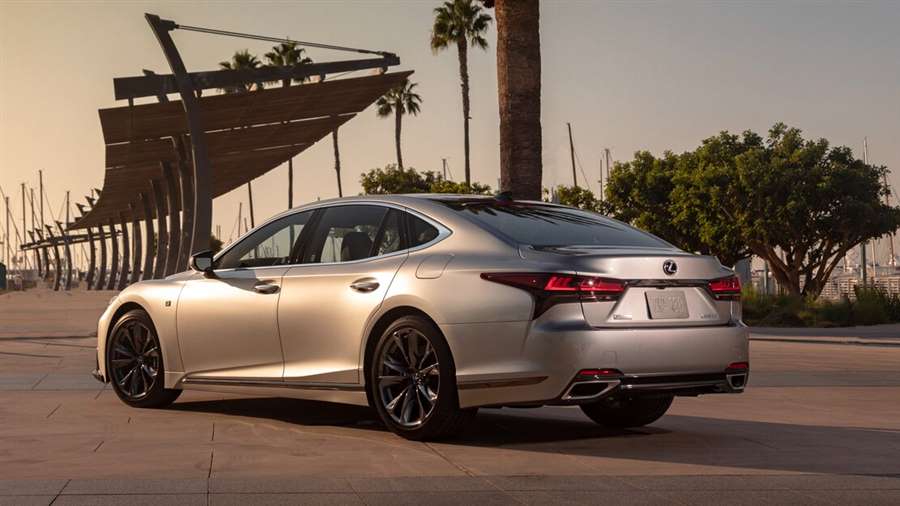
Tesla, on the other hand, only recently began actually using the included in-car camera to track the driver's involvement in the Model 3 and Y; the Model S and X hadn't even included the cameras until their recent refresh. This lack of monitoring has made possible those moronic YouTube videos you may have seen showing Tesla drivers able to climb into the back seat, or even go to sleep, with Autopilot active, and with disastrous results.
So, How Does Lexus Teammate Work?
The short answer? It works well. The longer answer is, it feels like a future-looking driver assist designed by Toyota. In other words, the system truly acts as a driver's partner and less like a carefree system a driver activates and simply tunes out from for a while. There is an abundance of communication from the car about where on the spectrum of involvement the driver is or needs to be in a given situation, too.

On a brief drive in Dallas near Toyota's Plano, Texas, headquarters, we experienced Teammate's two primary operating modes: Advanced Drive navigated, and not navigated. One can plug a destination into the nav screen, and, should the route take you onto an eligible freeway, you'll be given a heads-up that Advanced Drive will soon be available as you approach an on-ramp. A distance countdown in the head-up display shows you exactly how far remains until hands-free driving is possible. Once on the freeway, a message flashes in the gauge cluster alerting you the system is initializing.
After a few seconds, if everything's gravy, a graphic in the gauge cluster turns blue and an audible alert invites you to activate Teammate's Advanced Drive function. Simply press the corresponding button on the steering wheel, and the system leaps into action, taking control of steering, braking, and acceleration at the speed you were traveling when you pressed the button. Drivers can use the cruise-control adjustment to increase or decrease their set speed.
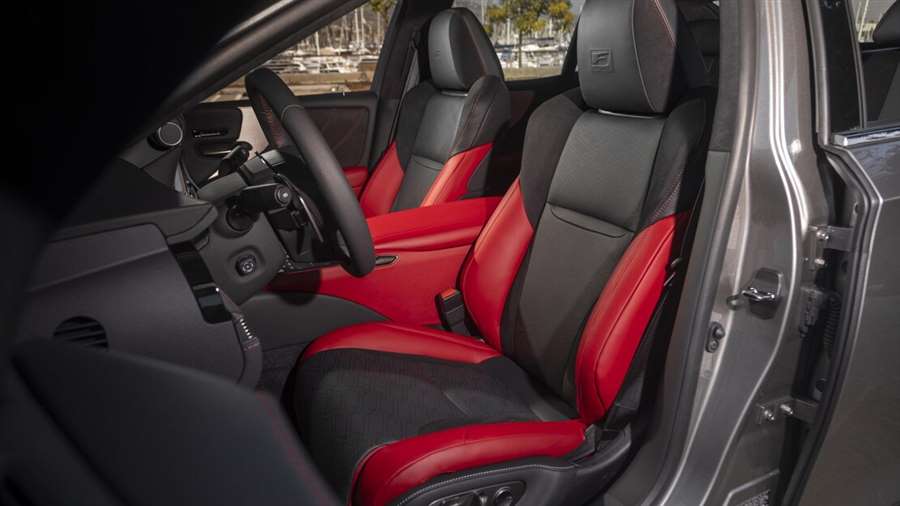
Again, with a navigation destination set, the system alerts the driver when their exit is approaching; it determines and displays decisions 6 miles ahead of time, with exit urgency growing within 2 miles of an off-ramp. It prompts you to monitor lane changes toward that exit (if the car isn't already in the right lane). Intriguingly, the car won't simply accept a lane-change instruction (you can tap the signal stalk in the direction you'd like to go) or change lanes without you: Either way, it beckons you to check the mirrors and "blind spot." Fail to get this head-turning choreography right (remember, the in-car camera is watching!), and Teammate won't follow through. It's not that Teammate can't handle lane changes on its own: With rear-facing radar on each side, it can make sure a car isn't fast approaching in your blind spot and size up gaps in traffic. That's something Autopilot relies on parking sensors and a camera for. But Teammate will only do its robot thing with your participation.
Approaching exit ramps or forks in the freeway, Teammate will slow the vehicle and steer into the appropriate lane. The same distance countdown that shows your proximity to Advanced Drive-eligible freeways counts down the distance in feet remaining before the driver must take control. Teammate will guide the car fully down an off-ramp until this handoff. Fail to take the wheel, and the car cinches the seatbelt a few times to get your attention and sounds audible warnings before slowing rapidly. Tap the gas or brake (or press the Advanced Drive button on the wheel), and it hands you control. Using Teammate without navigation is much the same, minus the steering toward exits or through forks and without countdowns into and out of system eligibility.
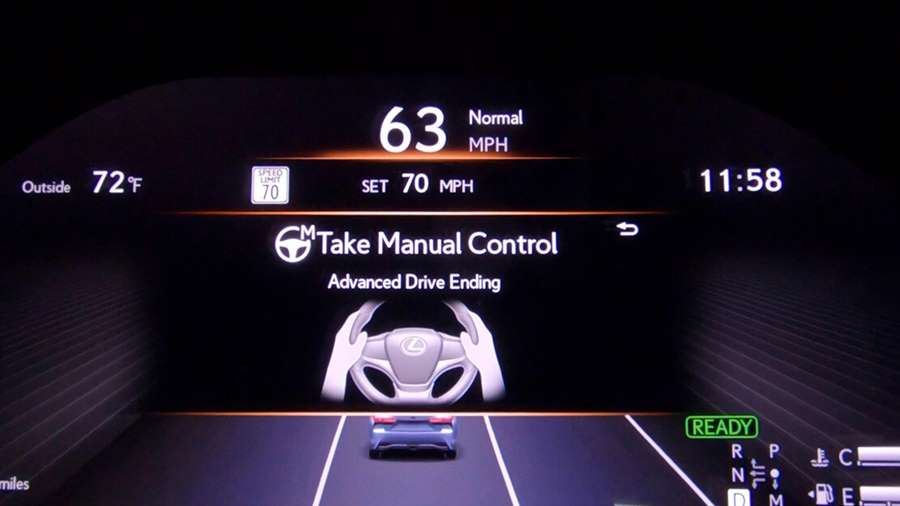
Clever And Reassuring
As with Tesla's Autopilot, Lexus Teammate uses the digital gauge cluster display to depict the Lexus positioned within lane markers (those are the lines that turn blue when the system is active), as well as animations of surrounding vehicles and objects. The similarities end there. In Teslas, the animated onscreen version of events surrounding the car are jerky, and nearby vehicles fade in and out of the Tesla's field of vision. In the Lexus LS500h with Teammate we drove, objects nearby were rendered smoothly and accurately on screen, inspiring more confidence that Teammate knew what was going on.
The system's driving smoothness, too, inspired even more confidence. Our Lexus remained precisely in the center of its lane unless—and this was impressive—a vehicle next to it got too close or wandered over the lane marker, spurring a gentle readjustment to maintain distance. At one point while Teammating in the right-hand lane, a Ford Explorer barreled down an on-ramp and looked like it was about to cross into our lane early, before the solid painted line separating the lanes gave way to a dotted one. As the Explorer was more or less even with the Lexus, we figured the car would crank the brakes and let the SUV cut in (likely taking the car following us by surprise) or, maybe, not see the situation developing and we'd be sideswiped. Instead, the LS500h deftly faded to the left and accelerated (we were traveling at less than our set speed at the time) past the wayward Explorer. It's what a smart human would have done had one been driving.
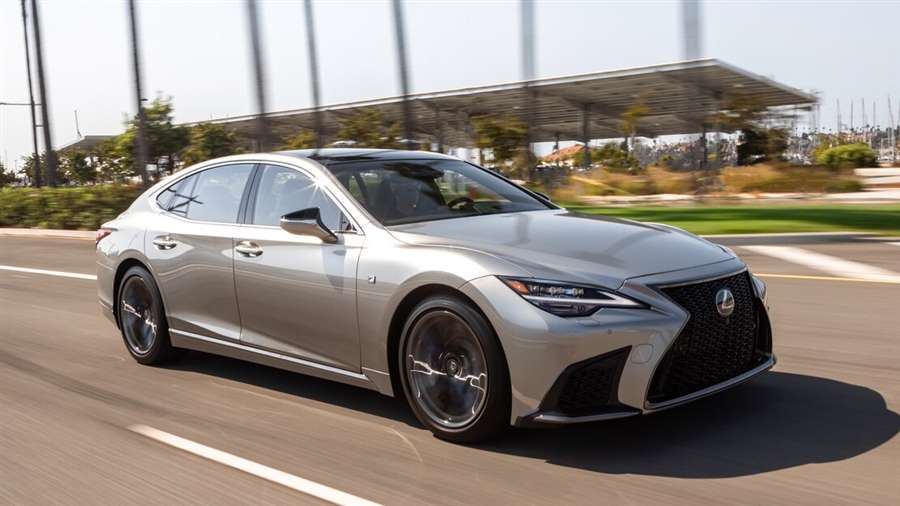
Interestingly, Advanced Drive will beckon you to participate now and again, mostly when it isn't entirely sure of its surroundings. It won't necessarily ask you to retake full control, however. There exists an in-between state where the car will continue steering, braking, and accelerating, but it asks for your hands on the wheel. (The animated lane markers in the gauge cluster turn gray in these instances.) Should stuff really hit the fan—or you reach the end of an exit ramp after leaving the highway—a series of visual and audio warnings urge you to retake full control. In all, the setup's feedback loop bolstered its apparent capability, leaving us far more comfortable than in other similar combinations of adaptive cruise control and lane-keep assist.
Teammate Going Forward
Lexus Teammate and Advanced Drive makes its debut on the 2022 LS500h hybrid sedan this fall. It also includes an Advanced Park function that fully handles parking, including steering, throttle, and braking (we didn't have the chance to try it). We suppose, over time, the feature will spread beyond the LS flagship sedan to other Lexus models, but Lexus has not yet specified its next steps. Curious how you'll spot a Teammate-equipped Lexus? Look for the little radar sensor units on each front fender (they look like vents but face rearward). Oh, and the driver may not be holding the wheel.
(motortrend.com)
David Hasselhoff and his powerful model from the legendary Knight Rider series
Fans of the cult series from the eighties, Knight Rider, were very honored when David Hasselhoff recently appeared on the Kelly Clarkson show.
Hasselhov was part of Clarkson's "DRIVE-INterview" sequence, in which guests, practicing social distance, stay in the car during the conversation. The innovative part of The Kelly Clarkson Show has previously hosted fascinating machines such as the 1970 Dodge Challenger, Jay Leno and Kurt Bush in its fleet of former competitive models.
Of course, Hasselhov appeared in K.I.T.T. model, although it is clear that this is a replica, because the original models used in the shooting can no longer be found. To be in line with the Trans Am model, Clarson appeared in the classic American Pontiac model. Until recently, the actor owned a personal K.I.T.T. which is also a replica and was not used in the original series, and was recently sold for a whopping $ 300,000.
When it comes to the relevance of the Knight Rider series, Haselhof argues that today’s technology is exactly what the team behind it envisioned forty years ago. “Cars talk, they’re completely autonomous, they can park on their own,” Hasselhof said. He also commented on how at the time of filming the popular series, cars did not go through CGI processing for their stunts and offered to teach Clarkson how to make a proper J turn in minutes.
He went on to confirm that this series will get a modern edition, which is currently in production, but this is not the first time that fans of the old title have heard the same story. The last attempt to shoot a new series was canceled by the NBC house after only one season, while Haselhof appeared only briefly in the pilot episode.
{vembed Y=cUGiEjGptZo}
Back in 2014, there was information that the shooting of the film was also in the spotlight, and it was supposed to feature John Cena and Kevin Hart, as the main duo who would be in charge of the comic reinterpretation of the genre. Although all the news that appeared then has completely evaporated to this day, the latest reports state that the ribut is actually in development and that James Van, the director behind the Fast and Furious 7 titles, is behind it. Hasselhoff confirmed earlier this year, in an interview with Consequence Film Publications, that screenwriter T.J. Fixman is also behind the new sequel, but he still doesn't know if he will return to play the main character of this cult car series, Michael Knight.
New Volkswagen T-Cross Black Edition 2021 review
The small Volkswagen T-Cross SUV turns on the style in new Black Edition trim
Verdict
Black Edition trim is a useful update to the T-Cross line-up, adding some additional styling touches for not much extra. It’s a solid small SUV with some good tech – although we wish more of it was standard. However, we can’t fault the excellent powertrain when it comes to refinement and performance, while flexibility, practicality and efficiency are sound, too.
To keep its T-Cross compact SUV feeling fresh in an incredibly crowded class, Volkswagen has updated the range, adding new trims – including an Active model – and this, the T-Cross Black Edition.
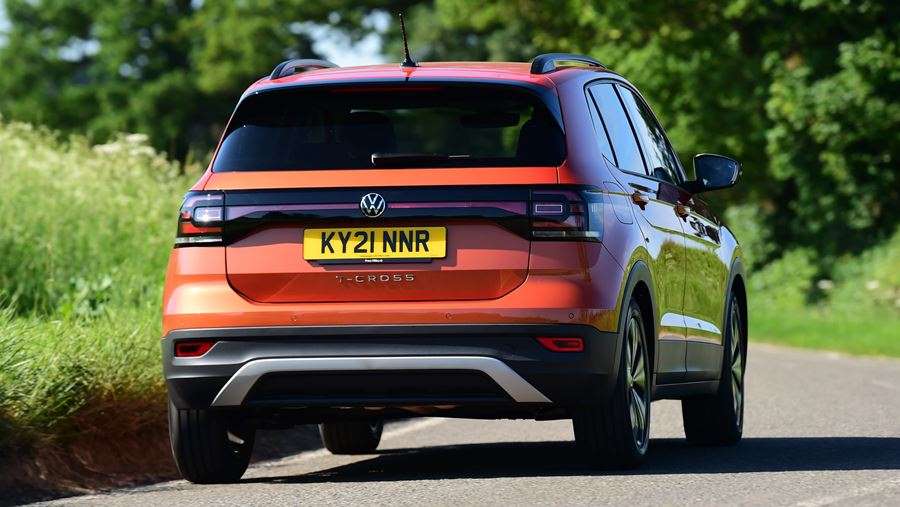
It’s identical to the rest of the range mechanically, available with the same 1.0 TSI turbo petrol in two power outputs (though not the range-topping 1.5 TSI), and either manual or dual-clutch automatic gearboxes, depending on which version you go for.
However, image is important in this class, and Black Edition trim – as its name suggests – adds some key visual extras, including 17-inch black diamond-turned alloys, black door mirrors and some dark tinted windows, plus some extra kit over the SE model it’s otherwise based on, including full LED headlights and all-round parking sensors.
The 108bhp 1.0-litre TSI 110 we’re testing will be a big seller, not least because it comes with a six-speed manual gearbox as standard, whereas the lower-powered 94bhp model makes do with a five-speed transmission.
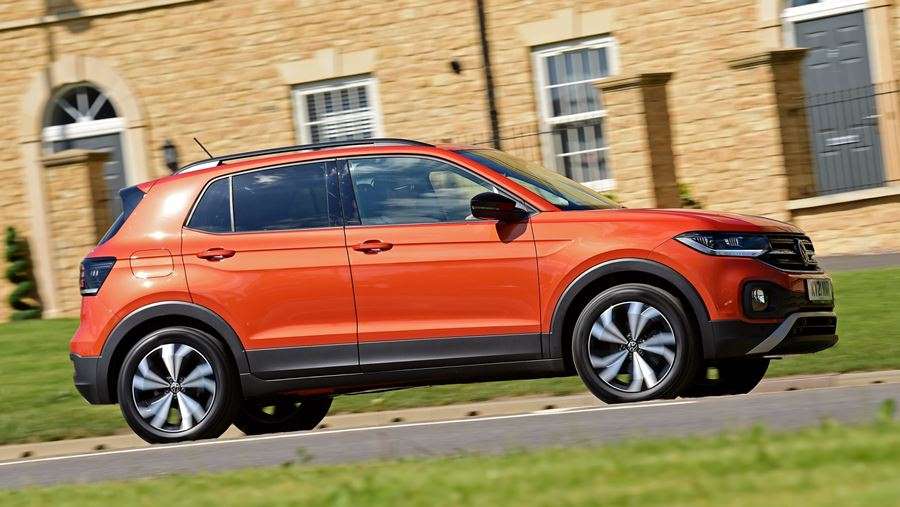
It’s an extremely refined engine as it is, but this extra gear – plus a useful 200Nm of torque – helps cruising refinement. The TSI 110 unit pulls smoothly and in a linear way; there’s not much turbo lag, just a smooth slug of torque that gets the T-Cross moving fairly swiftly and without any fuss from under the bonnet. The 0-62mph sprint takes 10.8 seconds, but it’s the flexibility that makes this a pleasing small SUV to use.
It’s coupled to good ride quality that only starts to become ruffled on bad country roads at mid speeds – it’s actually better the faster you go on this type of tarmac. Otherwise, the T-Cross is direct and agile enough to drive, with light steering and plenty of composure that means you can drive it faster than you might think.
Not that many owners will do this, and in everyday driving the T-Cross is a strong all-rounder. There’s a fair level of space in the rear of the cabin and a 455-litre boot, so small families shouldn’t feel the need for more space.
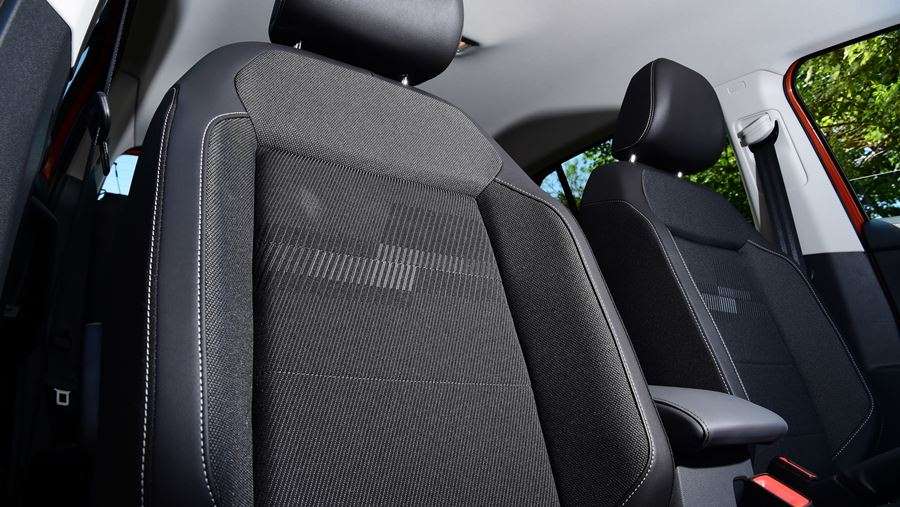
A sliding rear bench means you can prioritise either rear legroom or luggage space, so there’s a good level of flexibility. Along with the extra design touches here it shows that VW knows how small SUV buyers use their cars, offering an extra element of usability to help fit with the lifestyle crowd. It’s just as much a small family car as well, though, and we’d say that it offers a decent amount of practicality for most buyers in this class.
There’s just enough standard kit, too, given our test car’s £21,760 starting price. On top of the features mentioned above, Black Edition models benefit from adaptive cruise control, pedestrian detection with autonomous emergency braking, plus lane assist and blind-spot detection, as well as manual air-conditioning.
An eight-inch touchscreen infotainment set-up with wireless Apple CarPlay and (wired) Android Auto connectivity is included too. However, it’s a shame that VW charges £385 for its 10.3-inch Digital Cockpit Pro dash panel. Built-in sat-nav also costs £860, but it’s an extra we’d do without, given that many buyers will connect their smartphone anyway.
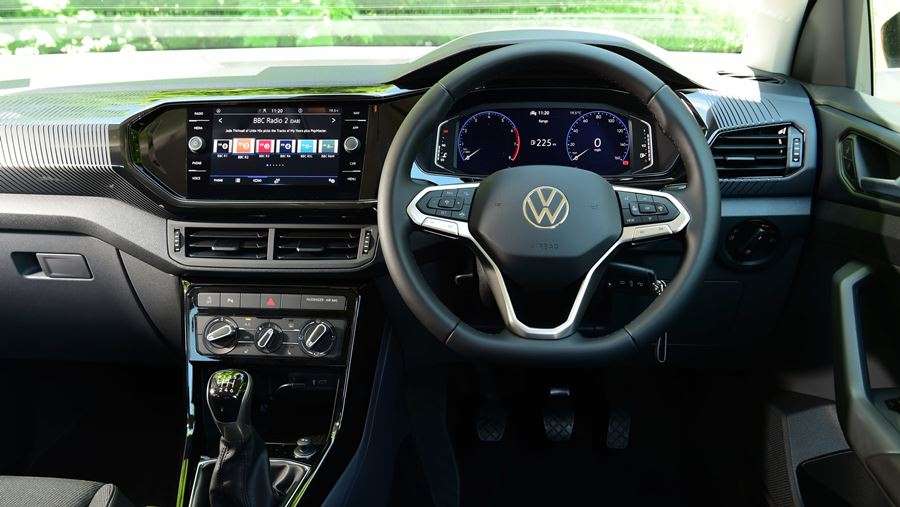
The infotainment works well, with the kind of snappy responses and sharp graphics on the main screen that we’ve come to expect from VW. The optional digital dash could still offer a higher resolution, though.
With a range of bright exterior colours to choose from, you can make your T-Cross stand out – or if you’d prefer to blend in, then there are darker hues, too.
Quality is fine, but nothing special and there are better small SUVs on sale when it comes to materials and finishes inside. But despite VW’s cost cutting in some areas, the T-Cross still feels solid enough at this price.
Its efficiency contributes towards its ability as an all-rounder as well, with WLTP-tested economy of 49.6mpg combined. This is the same as the less powerful 94bhp version, while the TSI 110 model’s 130g/km CO2 output is 1g/km better too, although this doesn’t change company car tax ratings.
Given there’s only a £725 difference in price we’d go for this more powerful model, because there’s no real penalty when it comes to running costs.
| Model: | Volkswagen T-Cross 1.0 TSI 110 Black Edition |
| Price: | £21,760 |
| Engine: | 1.0-litre 3cyl turbo petrol |
| Power/torque: | 108bhp/200Nm |
| Transmission: | Six-speed manual, front-wheel drive |
| 0-62mph: | 10.8 seconds |
| Top speed: | 117mph |
| Economy: | 49.6mpg |
| CO2: | 130g/km |
| On sale: | Now |

